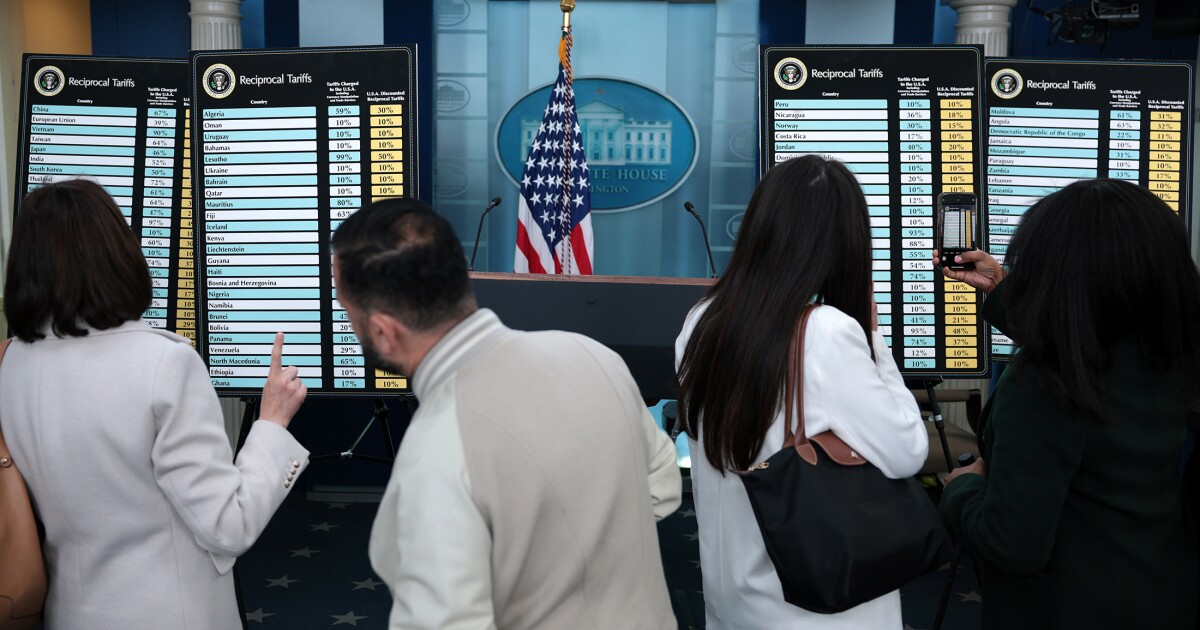
Treasury yields rose Monday led by long-maturity tenors as investors preoccupied with the potential fallout of US tariffs looked ahead to auctions later this week.
Yields for 10- to 30-year Treasuries climbed at least five basis points to the highest levels in more than a week, extending the selloff sparked by strong June employment data released Thursday, ahead of Friday's US holiday. Thursday's selloff was led by short-maturity tenors as it dimmed the outlook for Federal Reserve interest-rate cuts this year.
READ MORE:
Yields reached session highs following a large, seller-initiated block trade in long-dated Treasury futures. Negative sentiment was stoked by an array of factors including fresh uncertainty about the tariffs timeline, US budget legislation enacted over the weekend that's projected to widen the deficit, and this week's auction cycle of three- and 10-year notes and 30-year bonds beginning Tuesday.
"It's been very tricky to trade the bond market, because there has been this push and pull between when rates are going to be cut and also the impacts of all these macro themes," Kathryn Kaminski, chief research strategist at AlphaSimplex Group, told Bloomberg Television.
Traders hoping for clarity on the Trump administration's tariffs agenda in connection with its July 9 deadline for countries to reach trade agreements still lack it. US officials signaled that tariffs will kick in on Aug. 1, allowing three more weeks of deal-making, as only a handful of agreements have been struck.
"Uncertainty has increased ahead of July 9 trade deal deadline as investors are starting to gradually price in the risk that President Trump could once again escalate global trade tensions and thus deal a blow to the global economic outlook," said Valentin Marinov, head of G10 FX research and strategy at Credit Agricole.
READ MORE:
Trump has said trading partners can expect a rate anywhere between 10% and 70% — implying some may have to shoulder higher tariffs than expected — though he suggested some deals are in the offing, too. Adding to the uncertainty, Treasury Secretary Scott Bessent indicated some countries lacking an agreement by Wednesday's deadline will have the option of a three-week extension to negotiate.
The dollar, which has often previously fallen on tariff concerns, was stronger against most major global partners on Monday. The Bloomberg Dollar Spot Index rose as much as 0.5%, though remains near its lowest levels since early 2022 after sliding almost 11% this year.
"We have a truce with China, and for the rest, it is a question of whether last-minute deals are struck, whether tariffs are substantially increased or whether fresh extensions are announced. All seem possible," said Chris Turner, head of FX strategy at ING.
READ MORE:
Other catalysts for higher Treasury yields Monday included the month's first sales of new corporate bonds, a surge in Japan's longest-maturity bond yields on concerns about fiscal spending ahead of an election this month, and higher euro-zone yields.
The US two-year yield, higher by less than two basis points Monday, is nearly 20 basis points higher than a week ago. The stronger-than-expected June jobs data released Thursday
Money markets are fully pricing in an interest-rate cut — which would be the first this year — by October. Fed meeting minutes from June, to be published Wednesday, will offer further insight into officials' stance on the inflationary and growth outlooks.
Longer-dated Treasuries are expected to remain under pressure after Trump's "One Big Beautiful Bill" was signed into law last week. The bill, the centerpiece of the President's second-term agenda, extends 2017 tax cuts and will add an estimated $3.4 trillion to US deficits over the next decade.
Vincent Mortier, chief investment officer at Amundi SA, one of Europe's largest asset managers, said the bill's detrimental impact on the US fiscal deficit matters more than tariffs, the cost of which "will be borne by many players".
"The sustainability of the US debt trajectory will start to be questioned," he said in an interview with Bloomberg TV on Monday. "More and more investors will try to hedge or to diversify away — slowly but surely — from the US dollar." The firm is bearish on the greenback.



